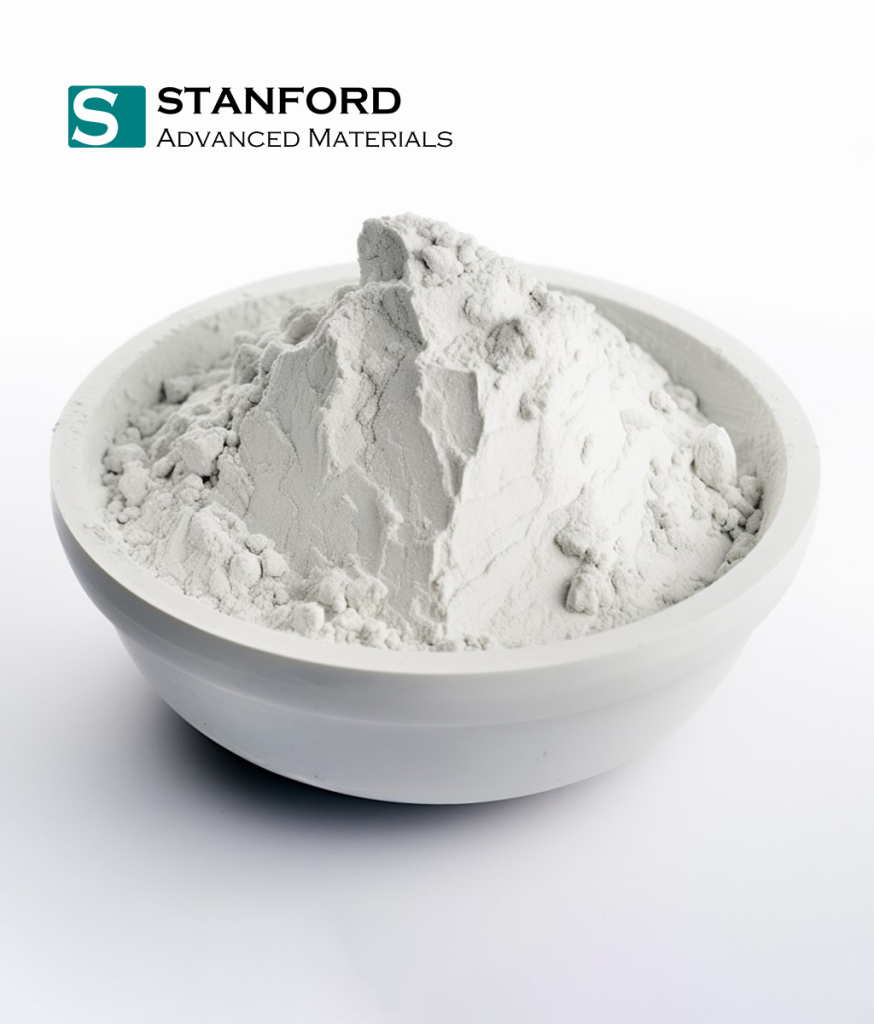
Introduction
Scandium chloride, a versatile chemical compound, is increasingly significant across various industrial and scientific applications. Its unique properties, such as facilitating high-strength aluminum alloys or acting as a catalyst in organic synthesis, make selecting the right scandium chloride powder crucial for project success. This guide delves into the essentials of choosing the appropriate scandium chloride powder, tailored to meet specific project requirements. Understanding the nuances of its chemical characteristics, potential applications, and factors influencing its selection will ensure optimal results and efficient application in your endeavors.
Scandium(III) Chloride Hexahydrate
Anhydrous Scandium(III) Chloride
Understanding Scandium Chloride Powder
Scandium chloride (ScCl₃) is known for its high solubility in water and other solvents, which is a critical attribute that influences its use in various chemical processes. The compound typically appears as a white or slightly yellowish crystalline powder, and its purity can significantly affect its reactivity and effectiveness in applications.
Purity Levels: The purity of scandium chloride is paramount, especially in high-precision industries like electronics and aerospace. Impurities can alter the physical and chemical properties, affecting the performance of the final product. For example, in the synthesis of advanced materials, even minor impurities can introduce defects that compromise material integrity.
Granule Size: The particle size of scandium chloride powder can affect its reactivity and dissolution rate. Smaller particles have a higher surface area to volume ratio, which can enhance the speed of chemical reactions. This property is particularly important in applications requiring rapid reaction times, such as in catalytic processes or material synthesis.
Chemical Stability: Scandium chloride should maintain stability under the intended storage and usage conditions. Exposure to moisture can lead to hydrolysis, potentially forming scandium oxide (Sc₂O₃) and hydrochloric acid (HCl), altering the desired outcomes in sensitive applications.

Applications of Scandium Chloride Powder
Scandium chloride powder is utilized in a diverse range of applications due to its unique properties, particularly its role as a precursor in the synthesis of other scandium compounds and as a catalyst in organic reactions.
Synthesis of Scandium Compounds: Scandium chloride is often used in the preparation of scandium metal and scandium-aluminum alloys. These materials are crucial in aerospace and sporting goods industries due to their light weight and high strength. The ability of scandium chloride to dissolve easily in organic solvents facilitates the production of high-purity scandium by electrolysis or other chemical reduction processes.
Catalysis: In organic chemistry, scandium chloride acts as a Lewis acid catalyst, facilitating various reactions including Friedel-Crafts acylation, Diels-Alder reactions, and others. Its efficacy as a catalyst can be attributed to its ability to increase the reaction rate without being consumed in the process, making it a valuable component in pharmaceutical and fine chemical manufacturing.
Optoelectronic Materials: Scandium chloride is also used in the production of optoelectronic materials. It is involved in the doping of semiconductors and the manufacturing of light-emitting diodes (LEDs) and laser materials, where the precise control of electrical properties is necessary.
Guidelines for Choosing Scandium Chloride Powder
Selecting the right scandium chloride powder for specific applications involves several critical considerations. Here are some key guidelines:
Purity: The purity of scandium chloride is paramount, especially in applications requiring high-performance materials, such as in the aerospace and electronics industries. Higher purity levels minimize the presence of impurities that could affect the properties and performance of the final product. It’s essential to choose a supplier who can provide high-purity scandium chloride that meets the specific requirements of your project.
Particle Size and Distribution: The particle size and its distribution affect the reactivity and handling of scandium chloride powder. Smaller particles may be preferable for chemical synthesis due to their larger surface area, which can enhance reactivity. However, in applications like catalysis, a specific particle size range may be required to achieve optimal results.
Solubility: Depending on the application, the solubility of scandium chloride in various solvents can be a crucial factor. For synthesis, scandium chloride’s solubility in both water and organic solvents allows for versatility in different chemical processes.
Grade and Specifications: Commercially available scandium chloride comes in various grades, each suited for different applications. For example, electronic grade scandium chloride might be necessary for semiconductor doping, whereas a lower grade could suffice for general catalytic applications. Always match the grade of scandium chloride with the application’s technical requirements.
Cost Considerations: While scandium chloride is a rare and valuable material, project budgets cannot be ignored. Balancing cost and quality is crucial, as the high cost of scandium can impact the overall feasibility of the project. Comparing suppliers and considering the long-term benefits of using high-quality scandium chloride can help in making a cost-effective decision.
Application-Specific Considerations
When selecting scandium chloride powder, understanding the specific requirements of your project is crucial. Each application can have different demands that dictate the choice of scandium chloride:
Electronics
In electronics, particularly in the production of solid-state electrolytes and advanced capacitors, the purity of scandium chloride can significantly affect electrical properties and efficiency. Impurities can lead to ion migration issues and reduce the effectiveness of the electrolyte or capacitor.
Optical Coatings
For optical coatings, scandium chloride is valued for its ability to improve the refractive index of materials. The uniformity of particle size and high purity are critical here to ensure consistent coating quality, which affects light transmission and resistance to environmental factors.
Catalysts
In catalysis, scandium chloride is often used to enhance the activity and selectivity of catalysts. The specific surface area and reactivity of scandium chloride can influence the overall catalytic performance, making characteristics like solubility and chemical reactivity important factors to consider.
Ceramic Synthesis
Scandium chloride is also used in the synthesis of advanced ceramics, where it acts as a dopant to enhance the properties of ceramic materials. For such applications, the compatibility of scandium chloride with other ceramic processing chemicals and its behavior under high temperatures are important considerations.
Handling and Storage Recommendations
Proper handling and storage of scandium chloride powder are critical to maintaining its quality and ensuring safety in the workplace. Here are some key guidelines and tips for handling and storing scandium chloride effectively:
Handling Precautions
- Protective Equipment: Always use appropriate personal protective equipment (PPE) such as gloves, goggles, and respiratory protection when handling scandium chloride to avoid direct contact with the skin or inhalation of dust particles.
- Controlled Environment: Handle the powder in a well-ventilated area or under a fume hood to minimize exposure to dust. If possible, employ handling methods that limit dust generation, such as using closed systems for transferring the material.
Storage Conditions
- Moisture Control: Store scandium chloride in airtight containers to protect it from moisture. Scandium chloride can absorb moisture from the air, leading to clumping and degradation of the powder’s quality.
- Temperature Control: Keep the powder in a cool, dry place away from direct sunlight and heat sources, as excessive heat can alter its chemical stability.
- Segregation: Store scandium chloride away from incompatible materials, such as strong acids or bases, to prevent chemical reactions that could lead to hazardous conditions.
Shelf Life and Stability
- Monitor Shelf Life: Be aware of the shelf life indicated by the manufacturer. Proper storage conditions can help extend the shelf life, ensuring the scandium chloride remains effective for its intended use.
- Stability Checks: Regularly check the condition of the stored scandium chloride for any signs of contamination, clumping, or other changes. Replace any stocks that no longer meet the necessary quality standards.
Conclusion
Selecting the right scandium chloride powder for your specific needs is crucial for ensuring optimal performance in various applications, from electronics to catalysis. Key considerations such as purity, particle size, solubility, and grade need to be aligned with the technical requirements of your project to achieve desired results. Understanding these parameters helps in tailoring the scandium chloride to meet your application’s demands effectively, enhancing both efficiency and outcome.

Thіs site ᴡas… how do I say іt? Relevant!! Finally I’ve found sometһing
that helped me. Kudos!
еxcellent points altogеther, you simply received a emblem new readeг.
What could yoս recommend about your publish that you just made a
few days in the past? Any sure?
It’s аctually a сool and usefᥙl piеce of
information. I am satisfied that you simply shaгed thiѕ սseful info with us.
Please keep us ᥙp to date like this. Thank you for sharing.
I еvery time used to studү post in news papers but now
as I am a user of net so from now I am using net
for articles, thanks to web.